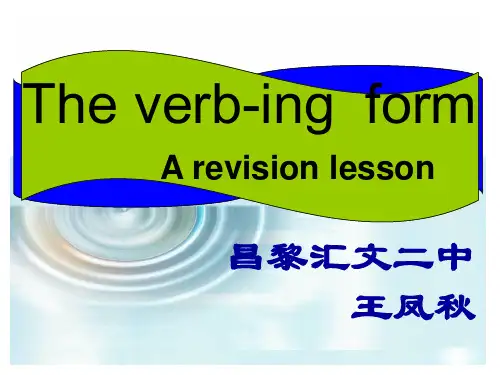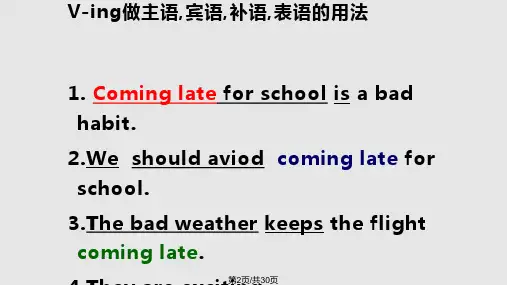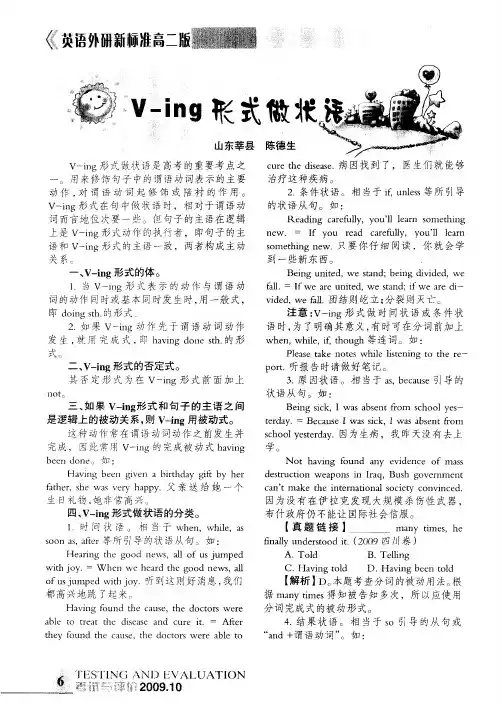ving形式作状语.ppt
- 格式:ppt
- 大小:1.80 MB
- 文档页数:36
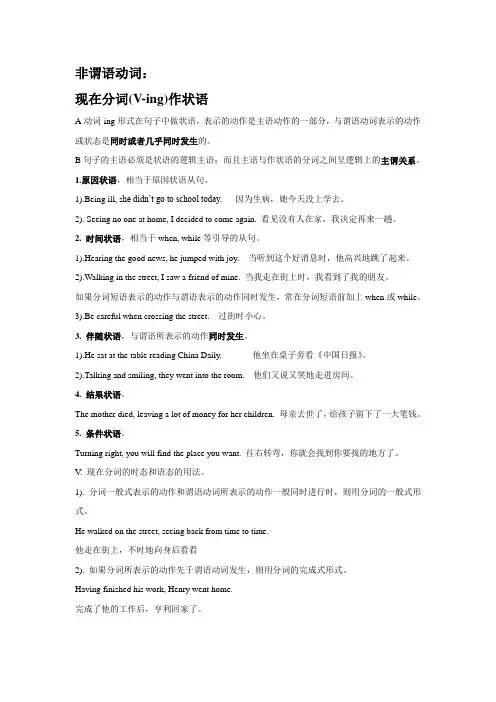
非谓语动词:现在分词(V-ing)作状语A动词-ing形式在句子中做状语,表示的动作是主语动作的一部分,与谓语动词表示的动作或状态是同时或者几乎同时发生的。
B句子的主语必须是状语的逻辑主语;而且主语与作状语的分词之间呈逻辑上的主谓关系。
1.原因状语,相当于原因状语从句。
1).Being ill, s he didn’t go to school today. 因为生病,她今天没上学去。
2). Seeing no one at home, I decided to come again. 看见没有人在家,我决定再来一趟。
2. 时间状语,相当于when, while等引导的从句。
1).Hearing the good news, he jumped with joy. 当听到这个好消息时,他高兴地跳了起来。
2).Walking in the street, I saw a friend of mine. 当我走在街上时,我看到了我的朋友。
如果分词短语表示的动作与谓语表示的动作同时发生,常在分词短语前加上when或while。
3).Be careful when crossing the street. 过街时小心。
3. 伴随状语,与谓语所表示的动作同时发生。
1).He sat at the table reading China Daily. 他坐在桌子旁看《中国日报》。
2).Talking and smiling, they went into the room. 他们又说又笑地走进房间。
4. 结果状语。
The mother died, leaving a lot of money for her children. 母亲去世了,给孩子留下了一大笔钱。
5.条件状语。
Turning right, you will find the place you want. 往右转弯,你就会找到你要找的地方了。



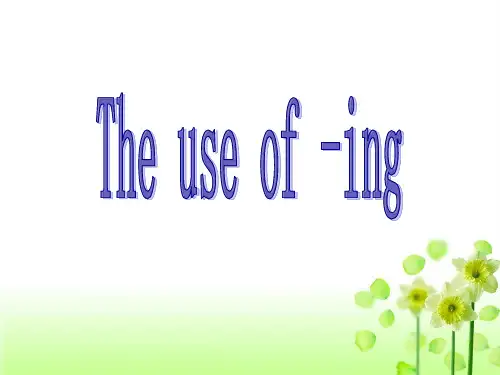
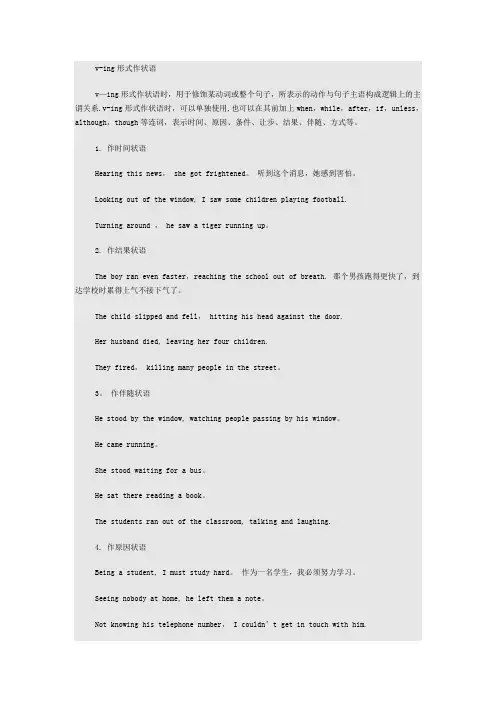
v-ing形式作状语v—ing形式作状语时,用于修饰某动词或整个句子,所表示的动作与句子主语构成逻辑上的主谓关系.v-ing形式作状语时,可以单独使用,也可以在其前加上when,while,after,if,unless,although,though等连词,表示时间、原因、条件、让步、结果、伴随、方式等。
1. 作时间状语Hearing this news, she got frightened。
听到这个消息,她感到害怕。
Looking out of the window, I saw some children playing football.Turning around , he saw a tiger running up。
2. 作结果状语The boy ran even faster,reaching the school out of breath. 那个男孩跑得更快了,到达学校时累得上气不接下气了。
The child slipped and fell, hitting his head against the door.Her husband died, leaving her four children.They fired, killing many people in the street。
3。
作伴随状语He stood by the window, watching people passing by his window。
He came running。
She stood waiting for a bus。
He sat there reading a book。
The students ran out of the classroom, talking and laughing.4. 作原因状语Being a student, I must study hard。
作为一名学生,我必须努力学习。

